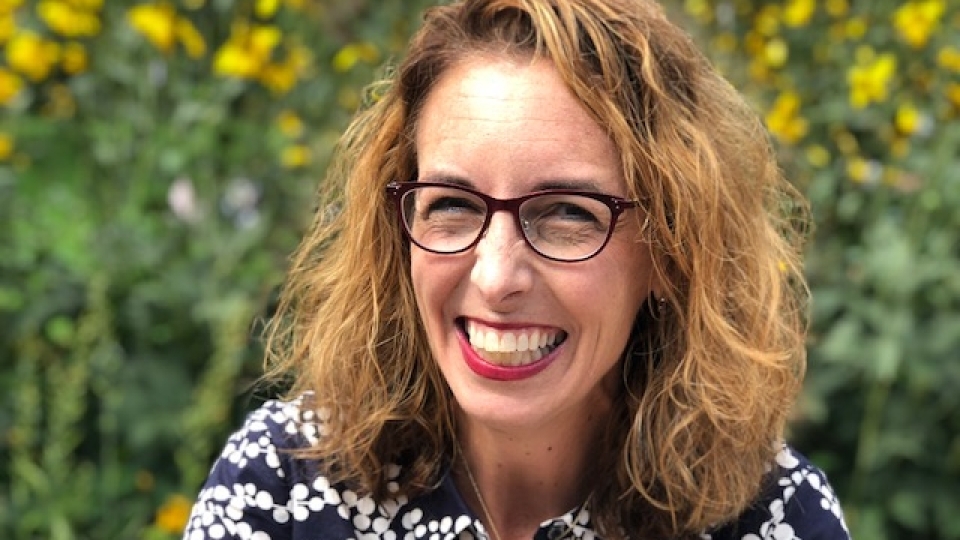Social Distancing Cinema: A Curated Guide to Epidemic Movies
March 18, 2020
- Author
- Jay Pfeifer

Professor Kata Chillag
Why would anyone want to watch a fictionalized epidemic while the coronavirus disrupts real life? Davidson College Professor and “Disease Detective” Kata Chillag says movies allow people to engage with their fears in a controlled way while documentaries about past pandemics can help us to understand the lessons they provide.
Another bonus: Watching movies at home is a good way to engage in social distancing.
Kata Chillag, Hamilton McKay Professor in Biosciences and Human Health, joined Davidson College in January, just before the virus that causes COVID-19 became an increasing source of concern.
A public health expert, Chillag spent more than a decade at the Centers for Disease Control and Prevention (CDC), serving a two-year stint as an Epidemic Intelligence Service Officer—or, as they’re sometimes known, “Disease Detectives.”
At CDC, Chillag worked on polio eradication in Bangladesh, biomedical HIV research in the United States and Sub-Saharan Africa, and served in the Emergency Operations Center during the H1N1 influenza pandemic. After CDC, she advised President Obama on ethical issues in science, technology, medicine and public health as part of the Presidential Commission for the Study of Bioethical Issues. She was a staff lead on their work on the 2014-2016 Ebola virus disease epidemic.
Chillag studies the social, ethical, and political dimensions of public health issues, often focusing on vulnerability and disparities.
“Generally, public health problems disproportionately affect vulnerable and marginalized groups,” she said. “The measures intended to address those problems may also place disproportionate burdens on them.”
Chillag said social distancing measures like school closings or cancellation of mass gatherings, as we can see in the COVID-19 epidemic, can play an important role in public health response, but it is critical that they be grounded in the best available evidence, good governance, transparency, accountability, and solidarity.
“From the bubonic plague in the 1300s to the 1918 influenza pandemic to more contemporary epidemics like HIV/AIDS, SARS, H1N1, these epidemics teach important lessons. They can show us how vulnerable and marginalized persons and groups are affected,” she said. “We must always keep them at the forefront of our considerations as public health professionals and members of communities.”
That means thinking broadly about the many forms and implications of vulnerability, Chillag said. For example, separation from communities can negatively impact mental health and compound economic precarity. Likewise, quarantine or isolation can exacerbate stigma or discrimination, and travel bans can amplify xenophobia.
This fall, Chillag will teach “The Epidemic Cinema Society: Public Health and Film,” a course that uses movies to explore public health. Interest in these movies is already high—with the 2011 Steven Soderberg movie, “Contagion” among the top rentals on iTunes.
Why would anyone want to watch a fictionalized epidemic while the coronavirus disrupts real life?
“At a time like this, movies like ‘Contagion’ allow people to engage with their fears in a controlled way while documentaries about past pandemics can help us to understand the lessons they provide,” Chillag said. “There’s another bonus: Watching movies at home is a good way to engage in social distancing.”
Here is a curated list of movies Chillag and her students will study:
The Andromeda Strain (rental)
“Based on a Michael Crichton novel, this 1971 film was a favorite of my family when I was growing up. A team of scientists investigate a deadly disease related to a crashed military satellite. Reflecting contemporaneous geopolitical anxieties, it chronicles the team undertaking a sometimes-plausible epidemiological investigation under very unusual circumstances. The set design is amazing.”
How to Survive a Plague (rental)
“This documentary is about the early years of the HIV/AIDS epidemic in the United States, chronicling how activist groups taught themselves relevant science to advance research on AIDS treatments. Interesting dimensions of this film include its examination of schisms within social movements and activists’ reflections many years later about their survivor’s guilt.”
The Lazarus Effect (YouTube)
“This 30-min HBO documentary from 2010 focuses on the effects of increased access to antiretroviral treatment in Zambia. It tells the story of Connie Mudenda, a woman deeply affected by HIV/AIDS who became a community HIV/AIDS and treatment educator. (Note: This movie is not to be confused with the pretty awful 2015 horror film of the same name starring Olivia Wilde.)”
Outbreak (Netflix)
“Loosely based on Robert Preston’s nonfiction book The Hot Zone, this fictional movie focuses on government attempts to contain an Ebola-like disease in the United States. When I interviewed for the Epidemic Intelligence Service, someone asked me if I had seen it. Before I could respond, he said: ‘Just know: Your travel will never be approved that quickly.’”
Contagion (Hulu)
“This one is popular right now because it hits close to home; chronicling the spread of a novel flu-like illness. A few scenes were filmed at CDC while I was there.”
World War Z (Hulu)
“This film follows a UN official investigating a virus that results in unusual and dangerous human (or maybe non-human?) behavior. Spoiler alert: This is a zombie film. But it still teaches important lessons. The CDC actually rolled out an educational campaign about emergencies called Zombie Preparedness and scientists have modelled zombie epidemics to try to learn more about disease transmission. I sometimes use both of these resources in my classes.”
We Heard the Bells (YouTube)
“Very timely. This documentary focuses on communities and groups disproportionately affected by the 1918 influenza pandemic. The 1918 influenza continues to provide lessons for the present, including about how epidemics can foster stigma and discrimination.”



